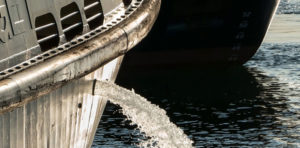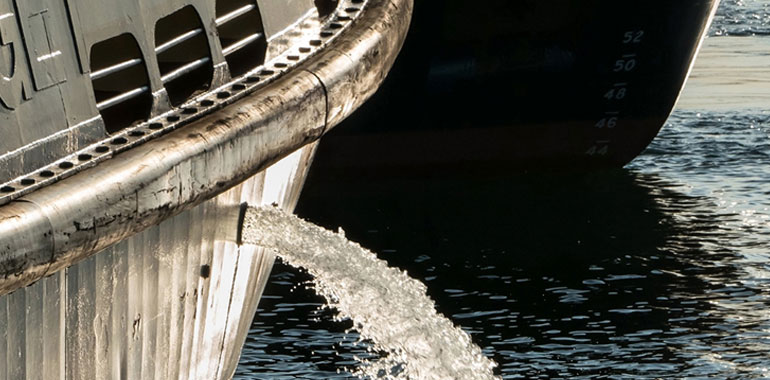
Maritime officials and organizations are lauding proposed vessel discharge regulations from the Environmental Protection Agency (EPA), saying they’re sorely needed to harmonize a mix of conflicting federal and state rules.
Congress required the EPA to establish new performance standards by the end of 2020 under the Vessel Incidental Discharge Act (VIDA) of 2018, which also requires the U.S. Coast Guard to set technical equipment requirements and enforcement policy by the end of 2022.
The new EPA regulations apply to vessels longer than 79 feet that operate in U.S. waters, including cruise ships, ferries, barges, tugs, tows, tankers, bulk carriers, containerships and research ships. They don’t apply to recreational or military vessels.
Once the new rules are in place, state laws will no longer be able to pre-empt VIDA. And that’s key, say many of the 179 organizations and individuals that weighed in during a public comment session that ended Nov. 25.
“For now, we’re still living with this patchwork quilt of different requirements in various states. But when these (new) regulations become final and enforceable, they’ll prevent any more stringent state programs, so there’s the consistency we’ve been begging for for 20 years,” said Kathy Metcalf, president of the Chamber of Shipping of America (CSA), which represents 28 U.S.-based companies that own, operate or charter oceangoing tankers, containerships and other merchant vessels engaged in domestic and international trade.
Discharge rules have “a significant operational impact on these vessels and their crews, which are so critical to keeping maritime trade and transport moving within the U.S. marine transportation system in a safe and environmentally responsible manner,” Metcalf said. She noted that the new regulations will be enforceable out to 12 nautical miles instead of the current 3 miles.
Steve Fisher, executive director of the American Great Lakes Ports Association, which represents the interests of commercial ports and port users on the U.S. side of the Great Lakes, said his organization welcomes regulations that will smooth out “an unfortunate chaotic landscape” of federal and state regulations that can hinder maritime commerce.
“Here you have a ship that is moving from state to state and country to country and the shipowner can experience a different set of rules every place. That’s why there’s a need for federal — and even better — international harmonization of these requirements,” he said, noting that proposed U.S. regulations are similar to those being implemented internationally.
In the CSA’s written comments to the EPA, Metcalf also said consistent international rules are necessary. “Shipping is a global industry and the regulation of global shipping should be international as well to ensure a single set of regulations apply to all vessels, regardless of flag or location,” she said. “We appreciate the fact that EPA has made every attempt to align the U.S. requirements with international requirements.”
The new rules address 20 vessel discharge categories, including bilge water, chain lockers, fire protection equipment, desalination, deck runoff, hull coatings and refrigeration systems. Most debate centers on the regulation of ballast water discharges to prevent the movement of non-native aquatic species from country to country.
Shipowners who operate in small geographic areas are not required to comply with the same kind of regulations that pertain to ships sailing from other places in the world to the United States.
“We have a number of vessel-operating companies whose market is really just moving goods around the Great Lakes,” Fisher said. “They’re not bringing in foreign organisms from Europe or Asia because they’re never leaving the Great Lakes. The EPA comes right out and says we’re exempting ships that trade exclusively in the Great Lakes.”
That’s a huge relief given the multimillion-dollar costs that would be involved with installing and maintaining ballast water management systems or retrofitting the fleet to connect to shore-based treatment systems, said James Weakley, president of the Lake Carriers’ Association, which represents the U.S.-flagged Great Lakes fleet.
But there will be costs associated with the new regulations for shipowners trading overseas who have vessels arriving at U.S. ports.
“They’ll be required to install treatment systems or equipment to comply with the water quality standards defined in these regulations,” Fisher explained, noting that the Coast Guard will decide deadlines for that and “costs will come down as more and more companies get into this equipment manufacturing business.”
While many organizations are looking forward to coordinated regulations, it will be a while before they’re implemented. The change in presidential administrations likely will stall the process. Plus, the Coast Guard has two more years to develop its rules.

